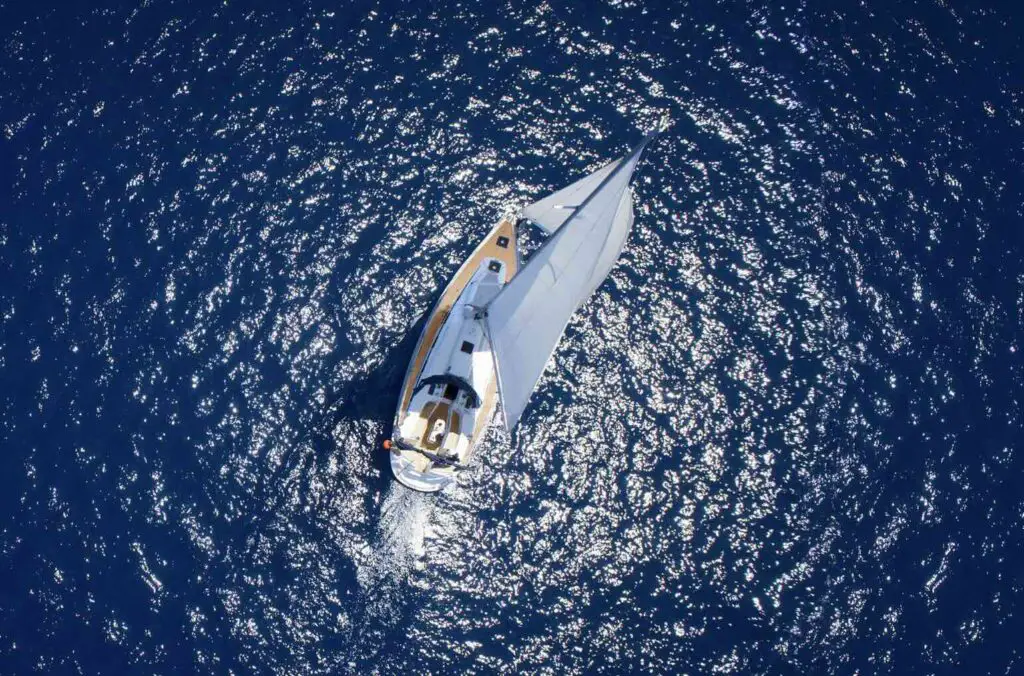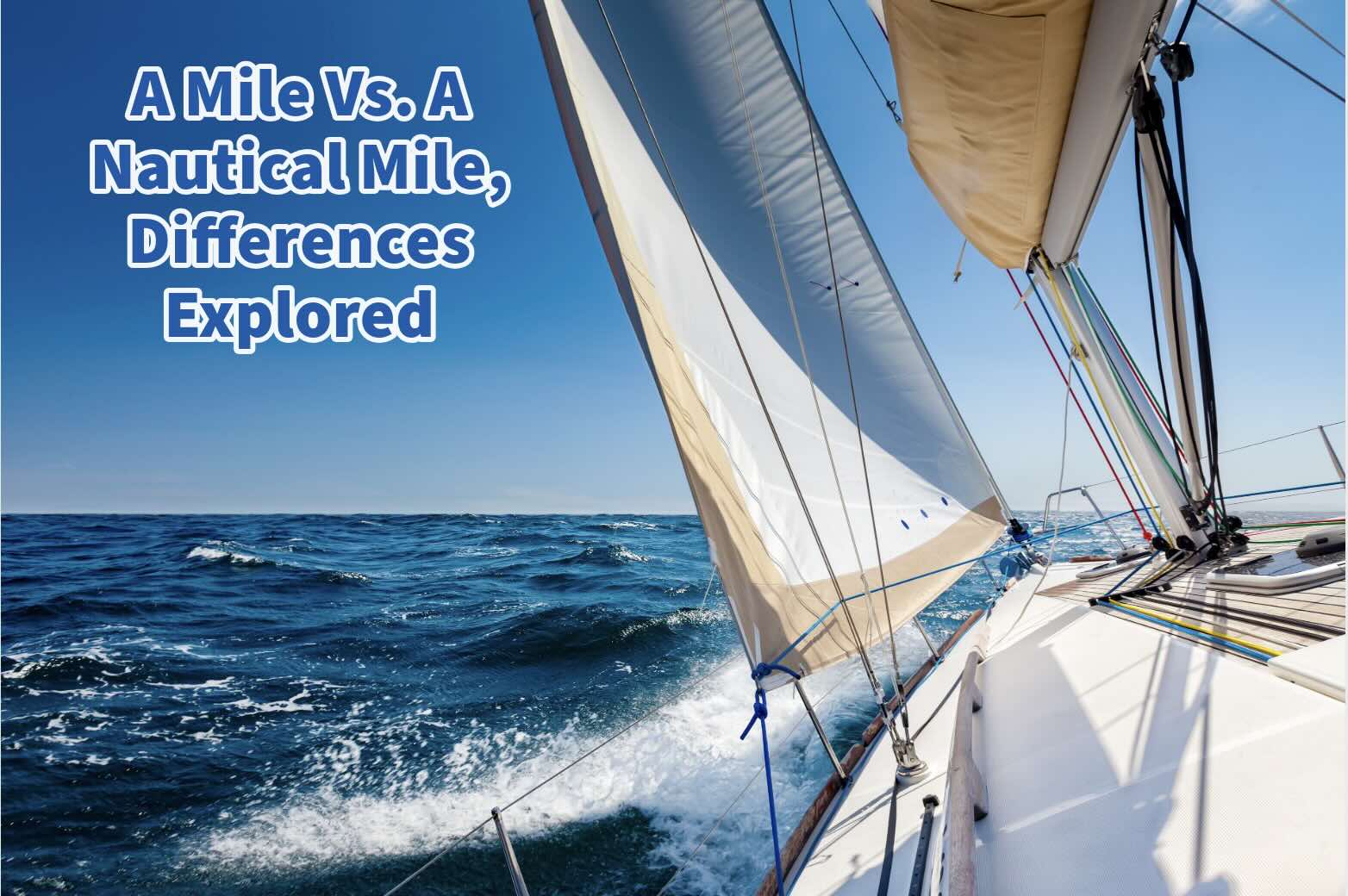As an avid sailor who spends countless hours on the water, I appreciate the intricate details and knowledge required for successful sailing. One crucial aspect often surprises newcomers is the difference between regular and nautical miles. This distinction is not just a trivial fact but a fundamental element in navigation that every sailor needs to understand.
For anyone passionate about boating or sailing, knowing that a mile on the water isn’t the same as a mile on land is essential. A nautical mile is based on the Earth’s circumference and is used in marine and air navigation. It equals approximately 1.1508 regular (statute) miles or about 1.852 kilometers. This difference can significantly impact navigation, course-plotting, and travel time estimates. Understanding these nuances helps ensure accurate navigation and enhances the overall sailing experience.
Table of Contents
- A Mile Vs. A Nautical Mile: Differences Explored
- The History Of The Nautical Mile In Boating
- Related Questions
A Mile Vs. A Nautical Mile: Differences Explored
As a dedicated sailor, I’ve learned that understanding the nuances of navigation is crucial for a safe and enjoyable journey on the water.
One fundamental concept that confuses newcomers is the difference between regular and nautical miles. This distinction is more than just a matter of terminology—it’s essential for accurate navigation and efficient sailing.

Defining The Mile And Nautical Mile
A regular or statute mile is a distance commonly used on land. It measures 5,280 feet or approximately 1.609 kilometers.
On the other hand, a nautical mile is a unit of measurement explicitly used in marine and air navigation. It is based on the Earth’s circumference and equals 6,076.1 feet or about 1.852 kilometers.
This measurement corresponds to one minute of latitude and one-sixtieth of a degree of latitude. The nautical mile’s relationship to the Earth’s geometry makes it particularly useful for navigation at sea.
A Mile Is Not A Nautical Mile – Why The Difference Matters
Understanding the difference between a mile and a nautical mile is vital for anyone involved in boating or sailing. Navigation charts and GPS systems used in maritime contexts typically employ nautical miles.
Therefore, knowing how to interpret distances in nautical miles ensures accurate course-plotting and distance estimation. For instance, if a sailor misinterprets nautical miles as statute miles, they could significantly miscalculate travel time and fuel needs, potentially leading to hazardous situations.
The Math Behind Nautical Miles
Appreciating why nautical miles are used in navigation helps one understand the math behind them.
The Earth’s circumference is approximately 40,075 kilometers. Dividing this by 360 degrees (a full circle) gives about 111.32 kilometers per degree of latitude. Since each degree is divided into 60 minutes, one minute of latitude equals roughly 1.852 kilometers, precisely one nautical mile.
This consistency makes nautical miles reliable for navigational calculations, aligning perfectly with the latitude and longitude grid system.
The distinction between a mile and a nautical mile is more than academic—it’s a practical necessity for effective navigation. As a sailor, grasping this difference has been crucial for my journeys, ensuring I can accurately chart courses and anticipate distances.
Whether you’re a seasoned mariner or a newcomer to sailing, understanding these units of measurement will enhance your navigational skills and contribute to a safer, more enjoyable experience on the water.

The History Of The Nautical Mile In Boating
It’s fascinating to delve into the history of the nautical mile and understand how this measurement has been utilized worldwide for centuries to truly grasp why we use it in boating instead of a regular mile.
Early Origins
The concept of the nautical mile can be traced back to the ancient Greeks, particularly to Eratosthenes of Alexandria in the third century BCE. Eratosthenes was a scholar who made significant contributions to geography and mathematics.
His attempt to measure the Earth’s circumference led to the early conceptualization of the nautical mile. Eratosthenes estimated the Earth’s circumference to be about 250,000 stadia, which he later rounded to 252,000 to simplify calculations.
This meant that each degree of latitude was approximately 700 stadia, or what we now consider roughly equivalent to 70 nautical miles.
Evolution And Standardization Of A Nautical Mile
The nautical mile evolved over the centuries as seafaring and navigation became more sophisticated. Different countries and regions initially used their variations of the nautical mile, leading to inconsistencies.
However, the necessity for a standardized unit became apparent as global navigation and maritime trade expanded.
In 1929, the International Hydrographic Organization (IHO), now known for setting international standards for nautical measurements, officially defined the nautical mile as exactly 1.852 kilometers. This standardization helped to unify nautical navigation practices globally.

The Nautical Mile Adoption By Major Maritime Nations
Despite the IHO’s definition in 1929, there were still slight variations in the measurement of the nautical mile used by different countries.
For instance, the United States and the United Kingdom initially used slightly different measurements. The U.S. adopted the international nautical mile standard in 1954, aligning with the IHO definition.
The United Kingdom followed suit in 1970, further consolidating the use of the standardized nautical mile in international navigation.
Importance In Modern Navigation
The nautical mile’s basis on the Earth’s geometry makes it an essential unit in maritime and air navigation. It corresponds directly to one minute of latitude, simplifying the distance calculations on nautical charts.
Adopting the nautical mile standard has facilitated accurate and consistent navigation worldwide, which is crucial for commercial shipping and recreational sailing.
Understanding the history of the nautical mile provides insight into the evolution of navigation. From Eratosthenes’ early measurements of the Earth to the international standardization by the IHO, the nautical mile has played a pivotal role in maritime history. Its precise definition and global adoption underscore its importance in ensuring safe and efficient navigation of the world’s oceans.
The use of the nautical mile is a testament to human understanding advancements and the need for standardized measurements in global navigation. As a sailor, appreciating this history enhances the experience of navigating the seas, knowing that you’re part of an extended maritime exploration and discovery tradition.
Listen To Our Podcast About
Is a Mile the Same as a Nautical Mile? Differences Explored
Below or By clicking here.

At A Bus On A Dusty Road, we talk about everything about culture, travel, life, sailing, and ex-pat living. We are all about “Living Life As A Global Citizen.” We explore social, cultural, and economic issues and travel.
We would love to have you be part of our community. Sign up for our newsletter to keep up-to-date by clicking here. If you have any questions, you can contact me, Anita, by clicking here.
Listen to our Podcast called Dusty Roads. You can find it on all major podcast platforms. Try out listening to one of our podcasts by clicking here.
Subscribe to our A Bus On A Dusty Road YouTube Channel with great videos and information by clicking here.
Related Questions
Milwaukee Community Sailing Center, Top US Sailing School
Milwaukee community sailing center is located on Lake Michigan in downtown Milwaukee Wisconsin. The sailing center is registered as a charity whose primary focus is to teach basic, intermediate, and advanced sailing classes to adults, youth, and children. They are also a charity 501c3 organization that helps many underprivileged children learn the art of sailing.
By clicking here, you can discover Milwaukee Community Sailing Center, Top US Sailing School.
How Much Wind Is Too Much For A Beginner Sailor?
For a beginner sailor, the wind is usually recommended to be under 10 knots. Those who are more experienced or with a larger boat can consider going up to 12 knots of wind. A knot is not the same as miles per hour or kilometers per hour but is faster than these measurements.
By clicking here, you can discover How Much Wind Is Too Much For A Beginner Sailor?
No Experience Sailing, 6 Tips To Get Started
If you are going to take up sailing, then the first thing you must do is get on a boat and find out if sailing is suitable. The best sailors can handle their boats in all kinds and types of weather. Find a class that you can join and get certified. Sailing requires knowledge and skill. Find yourself a sailing community that you can be part of.
By clicking here, you can discover No Experience Sailing, 6 Tips To Get Started.

